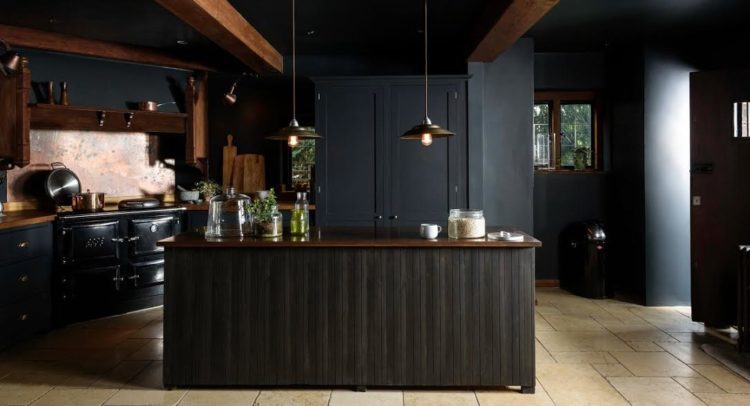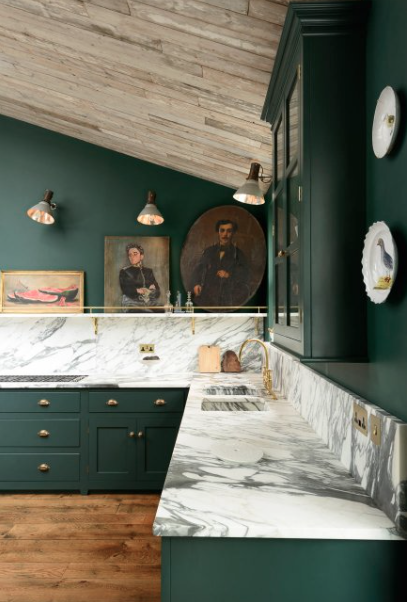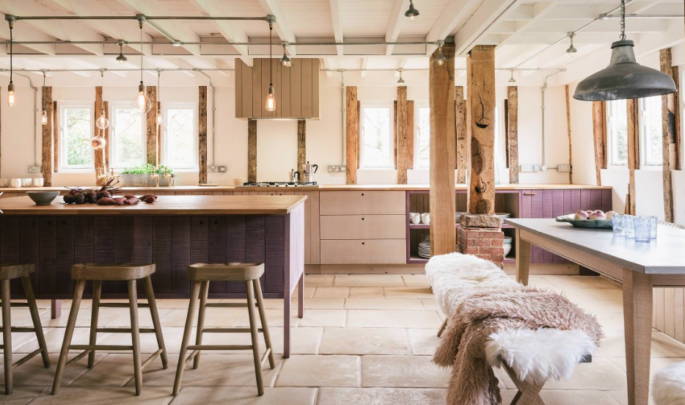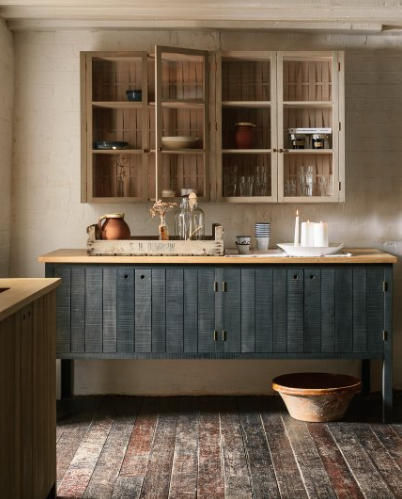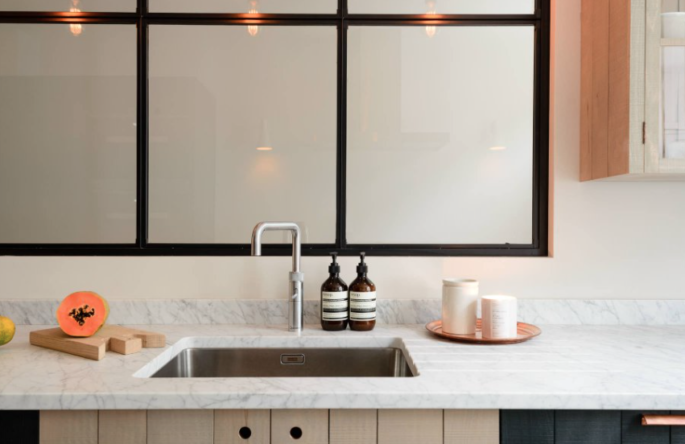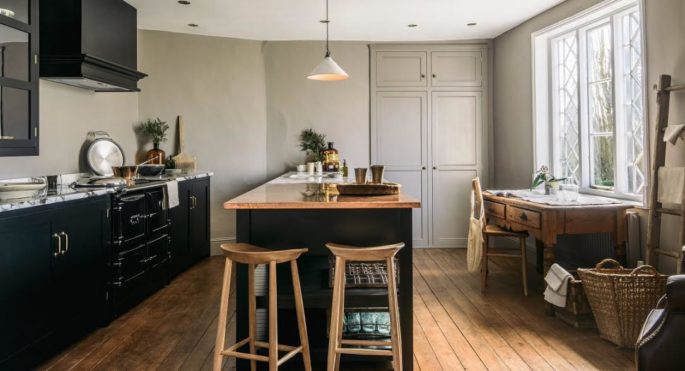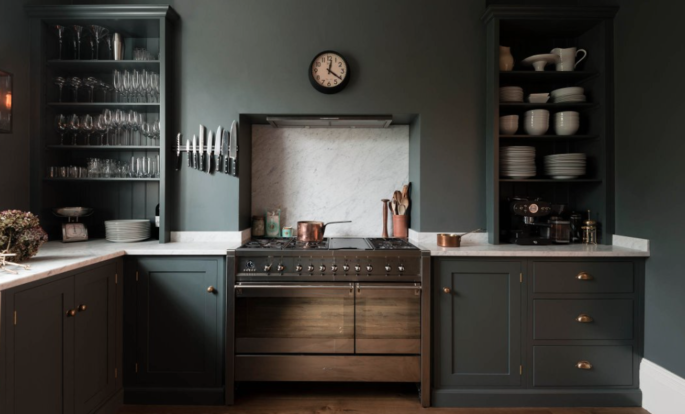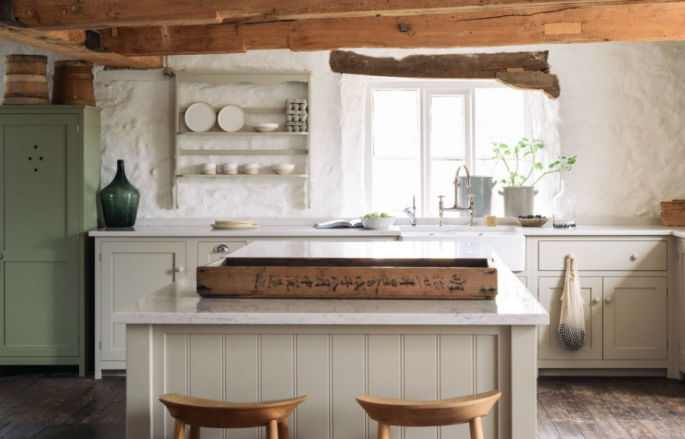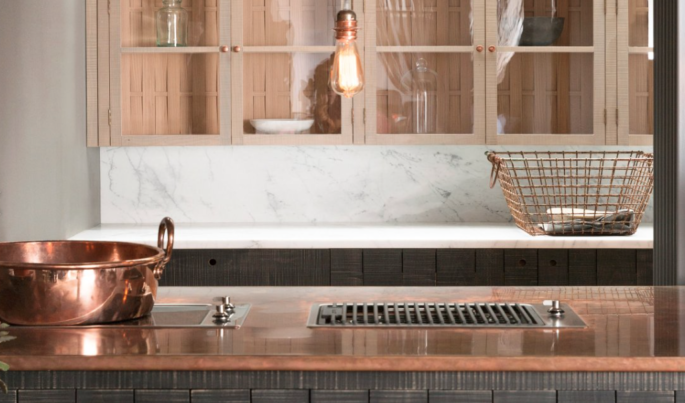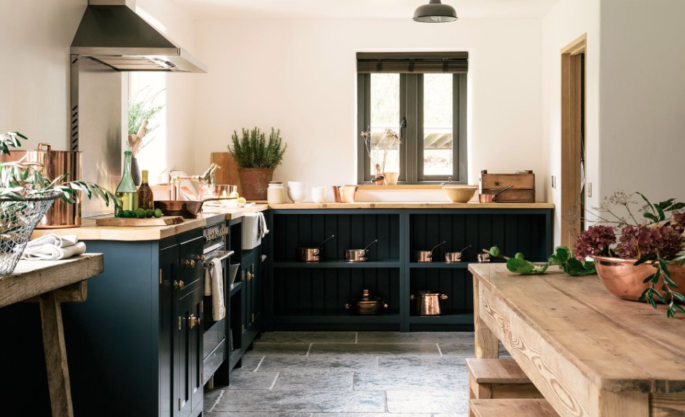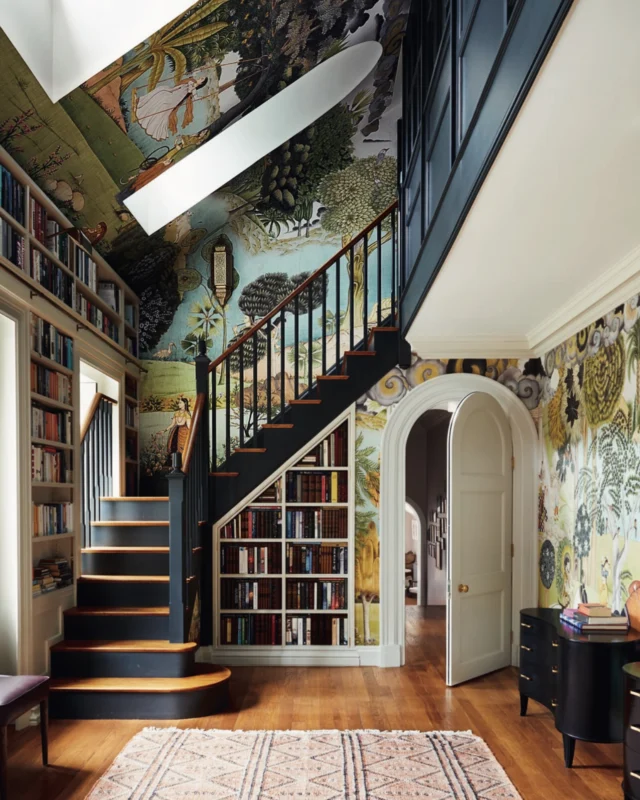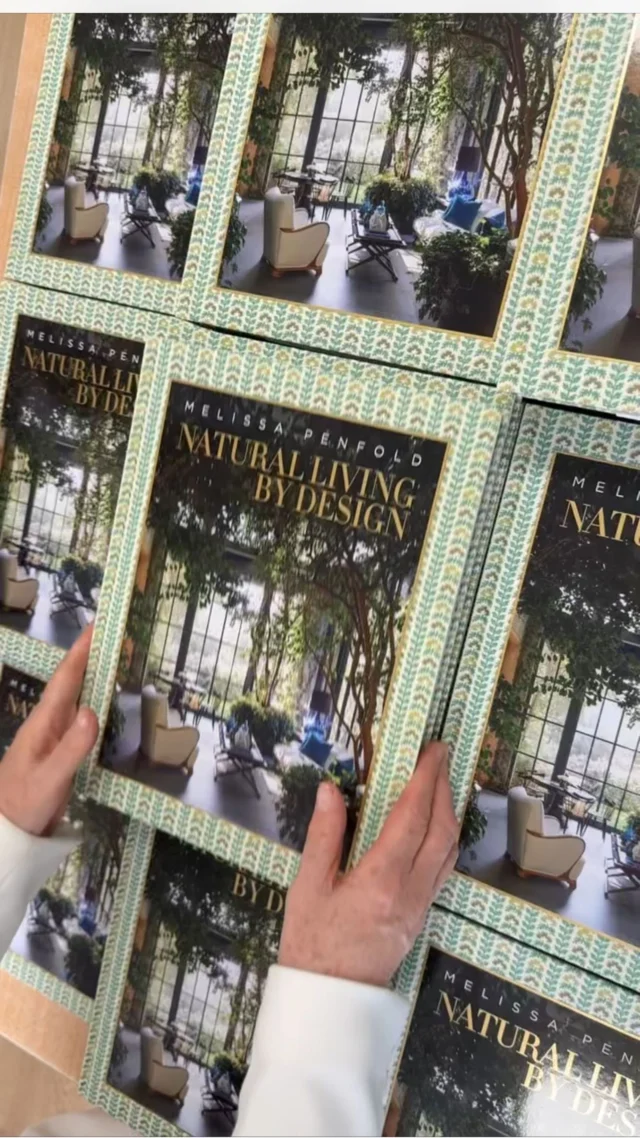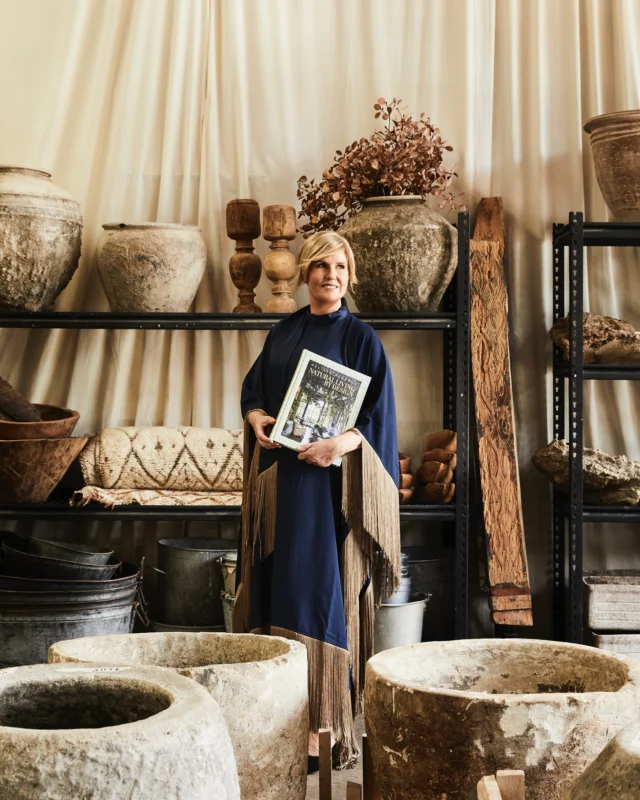Twenty-five years ago, marble and granite (in very limited shades and sizes) were for the wealthy only. But in the past decade stone has taken off, and the price has fallen. Suddenly there is also quartz, onyx, and limestone – the latter a big favourite with architects and interior designers – and new finishes galore. And then, of course, there are all the reconstituted stone products – natural stone blended, usually with tough polymers and pigments to produce a sleek, natural-looking finish. They are not a cheap option, but are seamless, come in any length you want, and you get great colour accuracy. They also stand up well to heat and hard knocks, and can be easily fixed. Don’t overlook the old familiars, though, such as butcher blocks to stainless steel and laminate. Even concrete is popular. Our benchtop guide will help you navigate what can be a daunting (and expensive) process.
When choosing benchtops, consider not just looks but toughness and heat-resistance: marble can take a lot more knocks than limestone, for instance. If you go with natural stone, treat it as you would a leather sofa: not with fear, but certainly with love and respect. If you’re extra rough and tough in the kitchen, consider mixing benchtop surfaces: stainless steel on the areas where you are going to plonk down hot saucepans, stone for more showpiece areas.
Don’t overlook the old familiars, though. Laminex is a classic – as practical and modern in the 21st century as it was in the 1950s. Use your imagination and remember, ultra-thick benchtops can be as fashionable as super-slim ones. For added glamour, you can even dump a slab of marble with cut corners on top.
Your builder or kitchenmaker will set you up with the following materials.
Timber
Butcher block benchtops can be high-maintenance: they need to be oiled at least every six months to prevent dulling and cracking, aren’t easy to clean, and will show marks if used for cutting. But they also get points for being charmingly rustic and warm, and can be quite economical, if not custom-made.
Concrete
Contrary to its formerly drab reputation, concrete makes a rather striking kitchen benchtop. It’s stylistically versatile, and can add a heavy-handed element or be as thin as a centimetre. Those who want extra durable benchtops should beware that it stains easily and can damage knives.
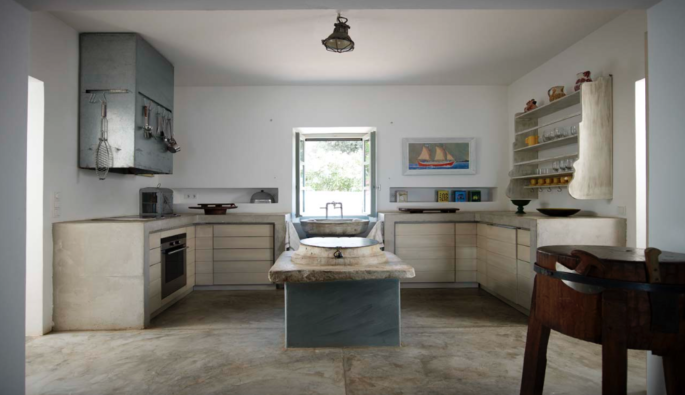
A kitchen with thick concrete counters by architect Theodore Zoumboulakis via Remodelista.
Stainless Steel
There’s a reason virtually every restaurant kitchen is clad in stainless steel: It’s almost indestructible, particularly tolerant to heat, and easy to get very clean. It can be expensive, but readymade freestanding benchtops, tables, and island benches from restaurant supply stores are an economical workaround.

Sleek stainless counters add industrial style to minimalist built-in shelving.
Marble
Marble is a classic, timeless choice for benches that instantly elevates any kitchen. It gets a bad rap for being high-maintenance—staining, scratching, or etching easily—but almost every house in Europe has a stone benchtop. The quarried stone, one of the more expensive materials you can use, sends a message of luxury and style. But unlike a solid-surface such as Corian or an engineered stone like Caesarstone where you know exactly what you’re getting – every slab of marble is one of a kind, with its own pattern and colours.
The most common Italian marble is Carrara, named for the region it comes from – a grey background with light grey veining, and patterning that is soft and feathery.
Carrara is a bright white luxurious marble featuring thick and dramatic veins that range in colour from gold to brown, beige and dark grey.
Corian
Another man-made option that’s gaining traction: Corian and other solid-surface countertops. A few of its virtues include being nonporous (which makes it resistant to bacteria and easy to clean); fully customisable, with variety of colours, styles, and shapes (it’s easily moulded to create draining racks, soap dishes, and more); and fairly economical. But it’s not heat resistant.
Reconstituted Stone
Made of quartz and flexible resins, engineered quartz and reconstituted marble benchtops are dead ringers for the stones on which they based. Architects and designers love them for their colour accuracy, durability, and the fact they need little maintenance, being acid-and chemical-free, tougher than the real deal, and resistant to nicks, scratches, and stains. Because engineered quartz is man-made, it’s available in slabs for benchtops or in tiles for floors and walls in an ever-expanding array of colours, styles, and textures, including some that look like marble or other natural stones.
Laminate
Still a classic: tough, seamless and now available in a huge range of colours, textures and finishes, that imitate marble or butcher block, without the attendant maintenance. A strong choice for those on a budget.
SOME TIPS FOR CHOOSING WHAT’S RIGHT + KEEPING COSTS DOWN There are a lot of choices. Give yourself plenty of time to take in all the options. Pricing is not always transparent, (this is not the supermarket aisle). Pricing is typically worked out via your builder with your supplier. Work with a good builder. They can lay out your job in a way that will minimise waste. Seek out stone and timber warehouses that have a remmant area with pieces leftover from other jobs, where you can often pick up materials, at a much reduced price. Be open to a variety of shades and patterns, so that you’re able settle on options that are easy to find and well-priced.

